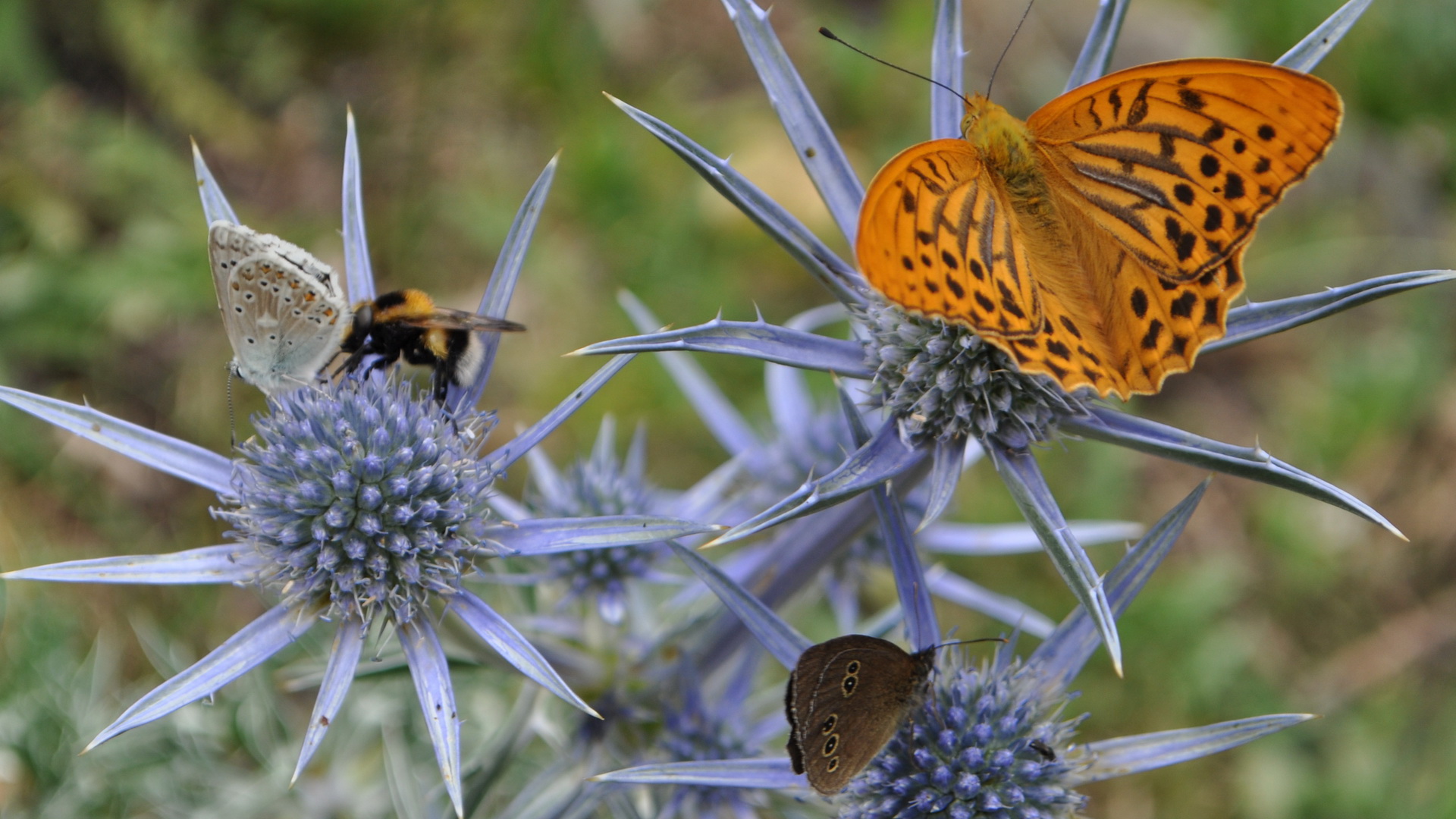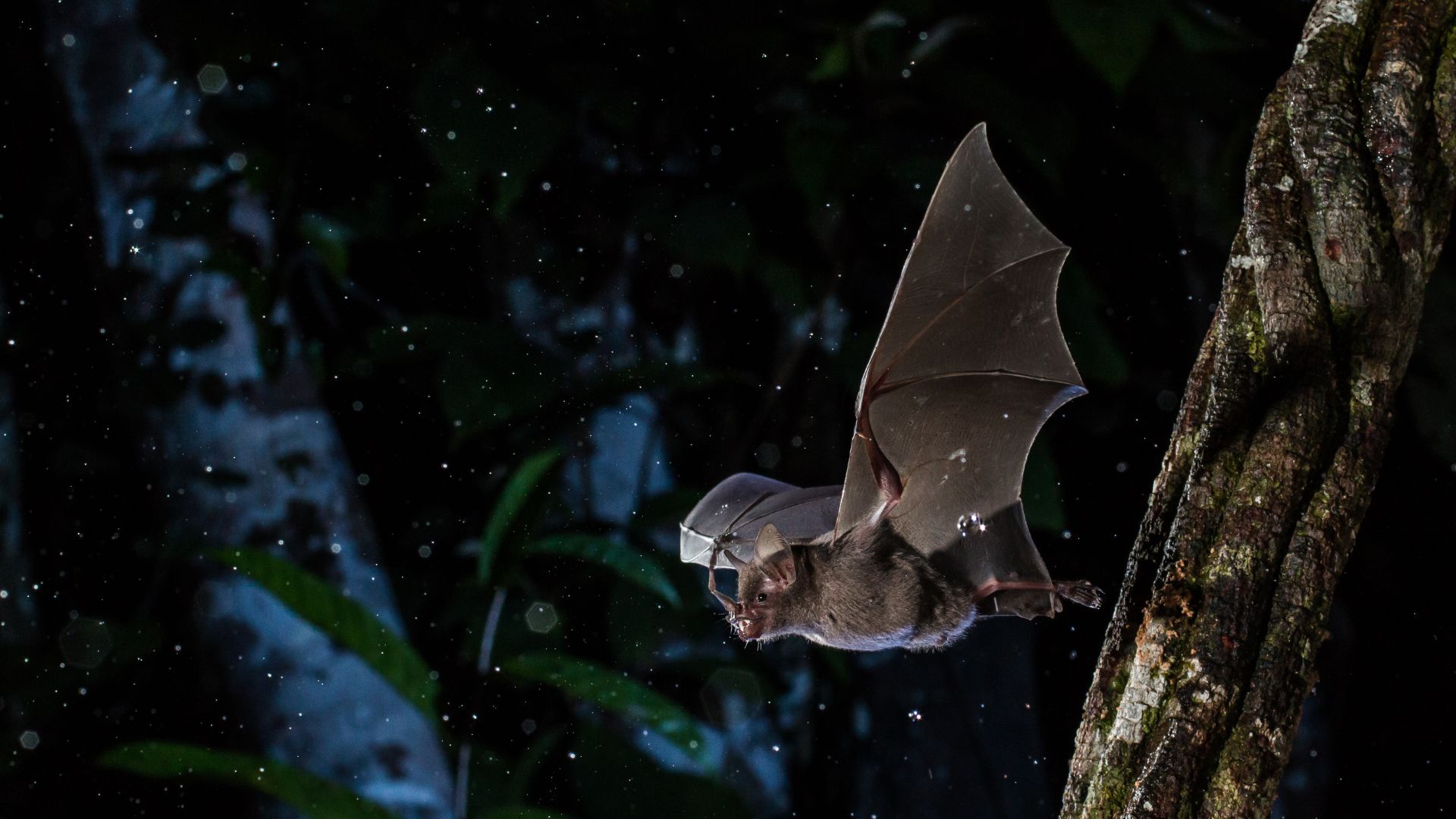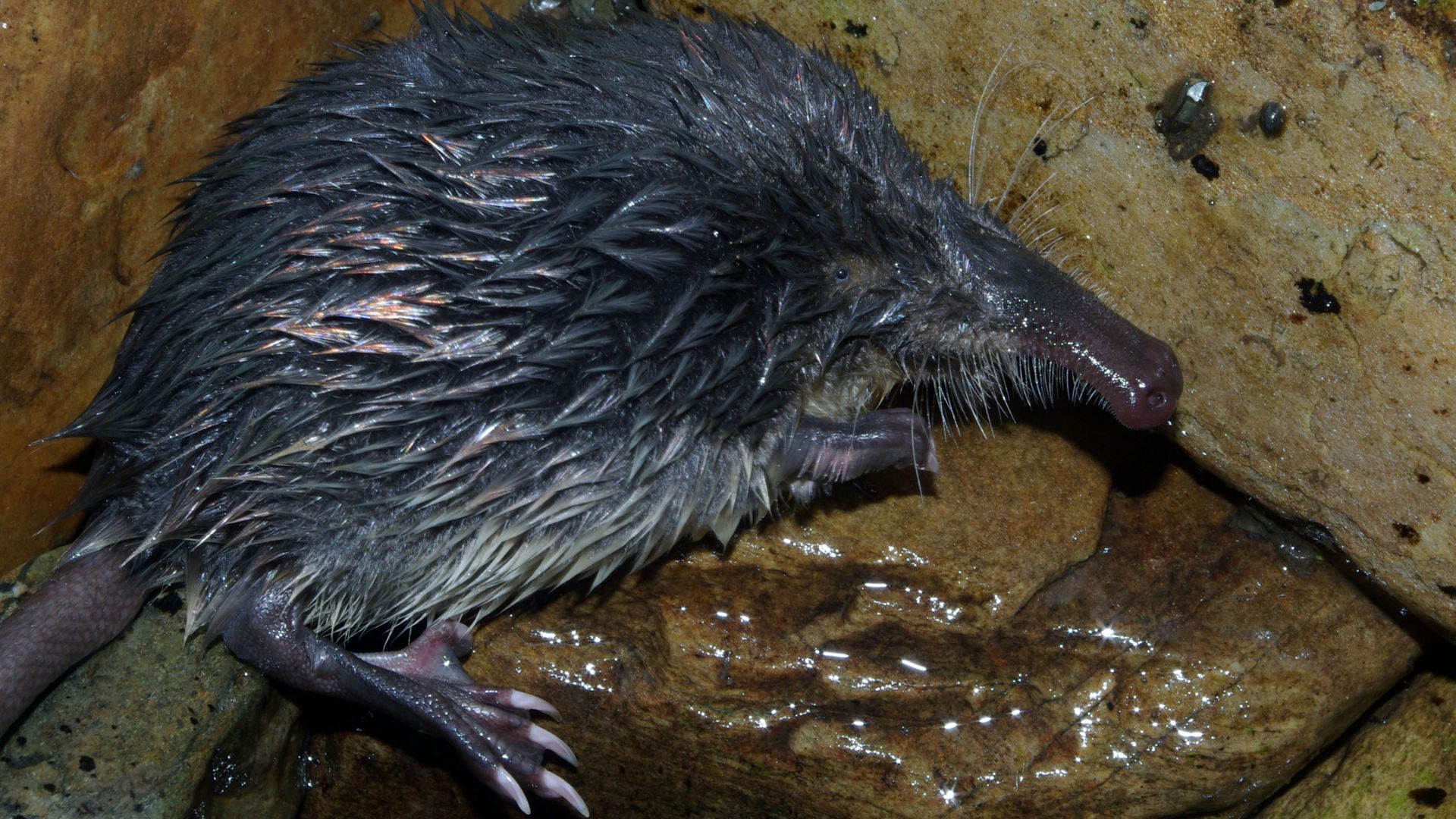Mutualistic and antagonistic relationships among species

© Clàudia Pla-Narbona
Mutualistic and antagonistic relationships among species lie at the heart of the complexity of ecosystems, as poetically captured in the famous metaphor of the entangled bank published in Charles Darwin’s Origin of the species. Long-term monitoring data complemented with ecological studies focusing on the role of natural enemies, competition, and mutualistic relationships among species provides an excellent framework for understanding population dynamics at different spatio-temporal scales.
Comprehensive monitoring data is regularly used by our group to study how butterfly communities are shaped by the antagonistic and mutualistic relationships that they establish with plants. More recently, this work has been expanded to include data on other pollinators. In parallel, much research is being done on parasitoids, which constitute the main natural enemies and play a central role in the population dynamics of many butterfly species.
Small mammals are at the base of the trophic networks, thus playing a central role as both predators of invertebrates and prey of medium-sized carnivores and raptors. Common small mammals are the bulk of the diet for generalist predators, sometimes showing numerical and functional responses to predation rates of small mammals available in hunting territories. At the same time, studying the diet of generalist predators reports information on the distribution and abundance of small mammals at the landscape scale, far beyond the reduced limits of live-trapping monitoring stations which only gives information of the common species. Indirect sampling techniques for the study of small mammals (i.e., the diet of small mammal predators) have been highlighted as relevant for species inventories (detecting all the species present), and for depicting patterns of distribution along climatic/landscape gradients at large spatial scales.
Predation risk modifies the behaviour of small mammals; either direct (i.e., visual, olfactory, auditive) and indirect cues (vegetation cover, lunar illumination) are used by mice to perceive predation risk, altering foraging behavior, and further affecting seed dispersal and scatter-hoarding under the well-known oak-mice conditional mutualism. This foraging behavior can be modified in the presence of competitors (other mice and ungulates) and predators.
- Stefanescu, C., Colom, P., Barea Azcón, J. M., Horsfield, D., Komac, B., Miralles, A., ... & Gutiérrez, D. (2022). Larval parasitism in a specialist herbivore is explained by phenological synchrony and host plant availability. Journal of Animal Ecology.
- Audusseau, H., Ryrholm, N., Stefanescu, C., Tharel, S., Jansson, C., Champeaux, L., ... & Schmucki, R. (2021). Rewiring of interactions in a changing environment: nettle feeding butterflies and their parasitoids. Oikos, 130(4), 624-636.
- Hernández Castellano, C., Rodrigo, A., Gómez, J. M., Stefanescu, C., Calleja, J. A., Reverté, S., & Bosch, J. (2020). A new native plant in the neighborhood: effects on plant–pollinator networks, pollination, and plant reproductive success. Ecology, 101(7), e03046.
- Guardiola, M., Stefanescu, C., Rodà, F., & Pino, J. (2018). Do asynchronies in extinction debt affect the structure of trophic networks? A case study of antagonistic butterfly larvae–plant networks. Oikos, 127(6), 803-813.
- Olesen, J. M., Stefanescu, C., & Traveset, A. (2011). Strong, long-term temporal dynamics of an ecological network. PloS one, 6(11), e26455.
- Stefanescu, C., Askew, R. R., Corbera, J., & Shaw, M. R. (2012). Parasitism and migration in southern Palaearctic populations of the painted lady butterfly, Vanessa cardui (Lepidoptera: Nymphalidae). European Journal of Entomology, 109(1).
- López-Morán, T., Sánchez-Dávila, J., Torre, I., Navarro-Castilla, A., Barja, I., Díaz, M. (2022). Biotic interactions unbalance the qualitative effectiveness of a conditional mice-oak mutualism. PLoS One
- Oro, D., Sanz-Aguilar, A., Carbonell, F., Grajera, J., & Torre, I. (2021). Multi-species prey dynamics influence local survival in resident and wintering generalist predators. Oecologia, 197(2), 437-446.
- López-de Sancha, A., Roig, R., Aymerich, P., Vila-Gispert, A., & Guasch, H. (2022). Trophic competition in a guild of insectivorous semi-aquatic vertebrates in a Pyrenean headwater stream: diet specialisation in the endangered Galemys pyrenaicus. Mammalian Biology, 1-11.
- Torre, I., Raspall, A., Arrizabalaga, A., & Díaz, M. (2018). Weasel (Mustela nivalis) decline in NE Spain: prey or land use change?. Mammal Research, 63(4), 501-505.
- Gallego, D., Morán-López, T., Torre, I., Navarro-Castilla, Á., Barja, I., & Díaz, M. (2017). Context dependence of acorn handling by the Algerian mouse (Mus spretus). Acta Oecologica, 84, 1-7.
- Fargallo, J. A., Martinez-Padilla, J., Vinuela, J., Blanco, G., Torre, I., Vergara, P., & De Neve, L. (2009). Kestrel-prey dynamic in a Mediterranean region: the effect of generalist predation and climatic factors. PLoS One, 4(2), e4311.
References
















